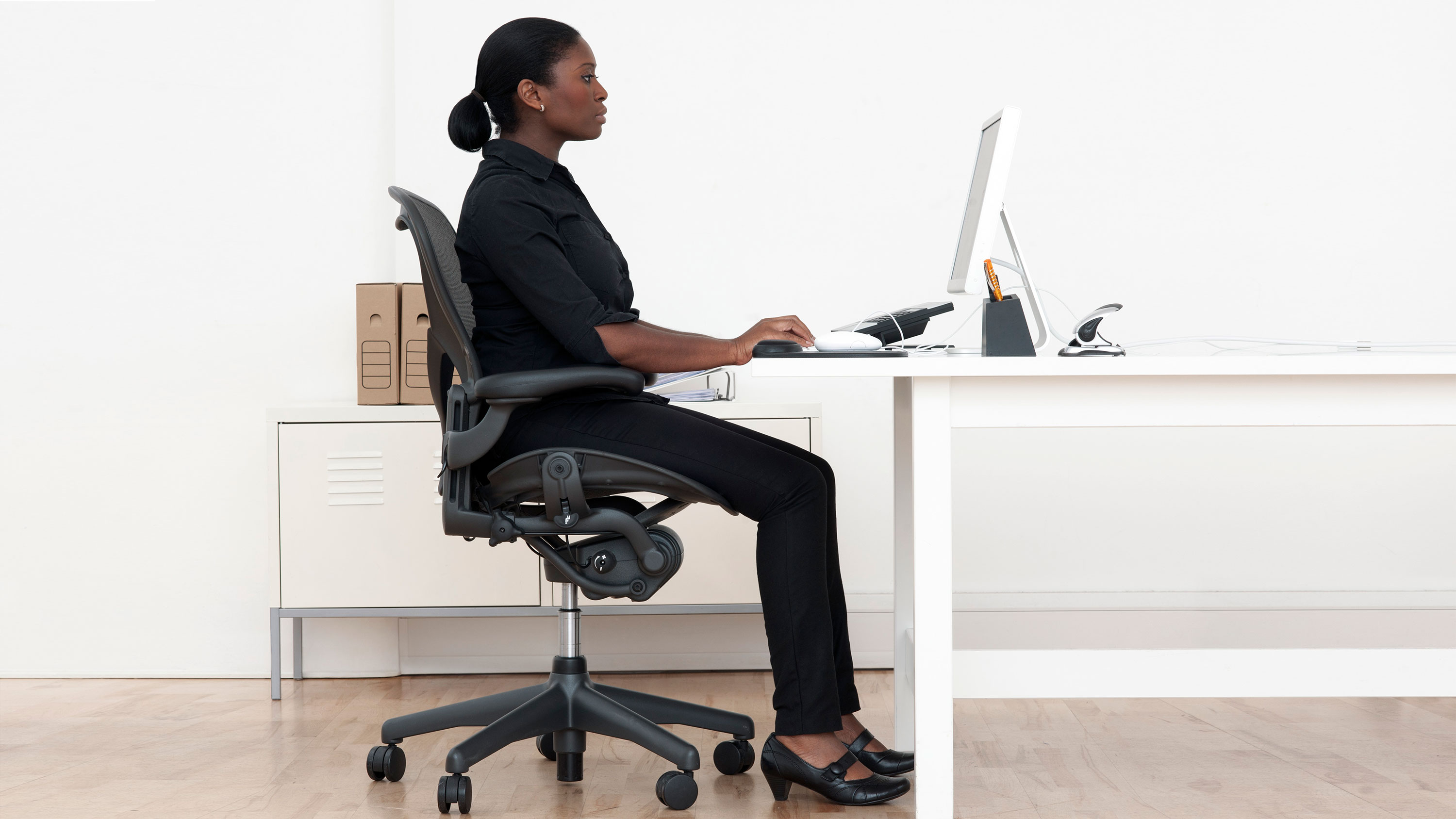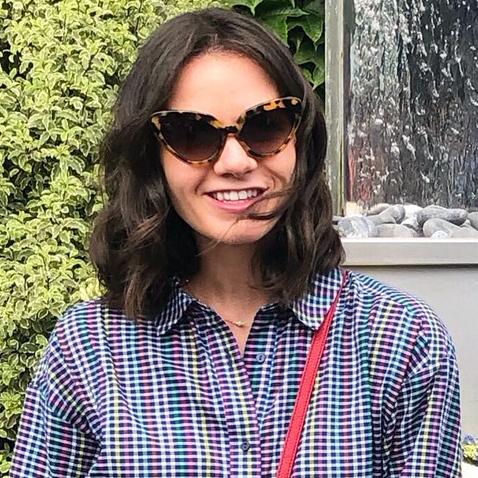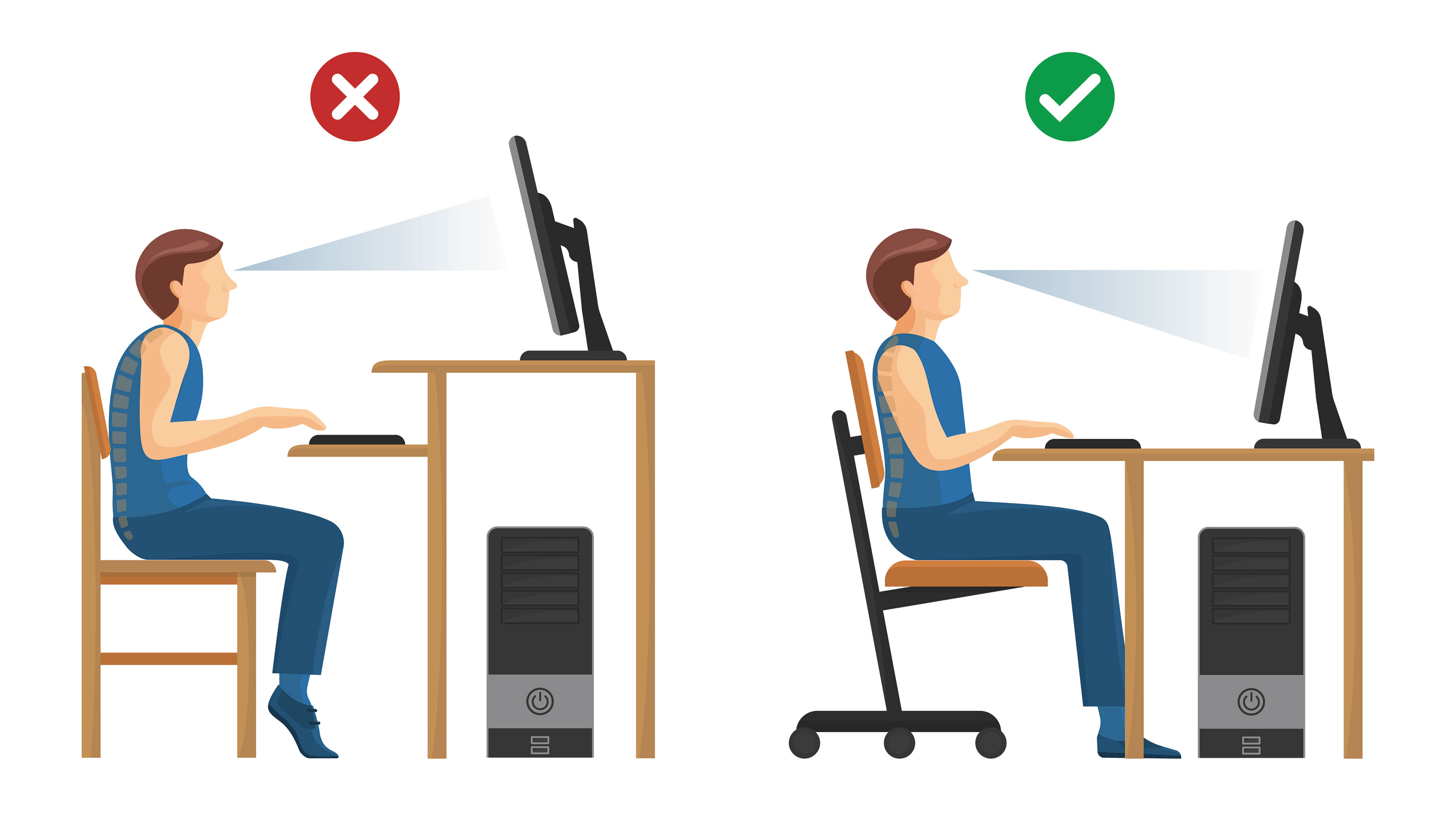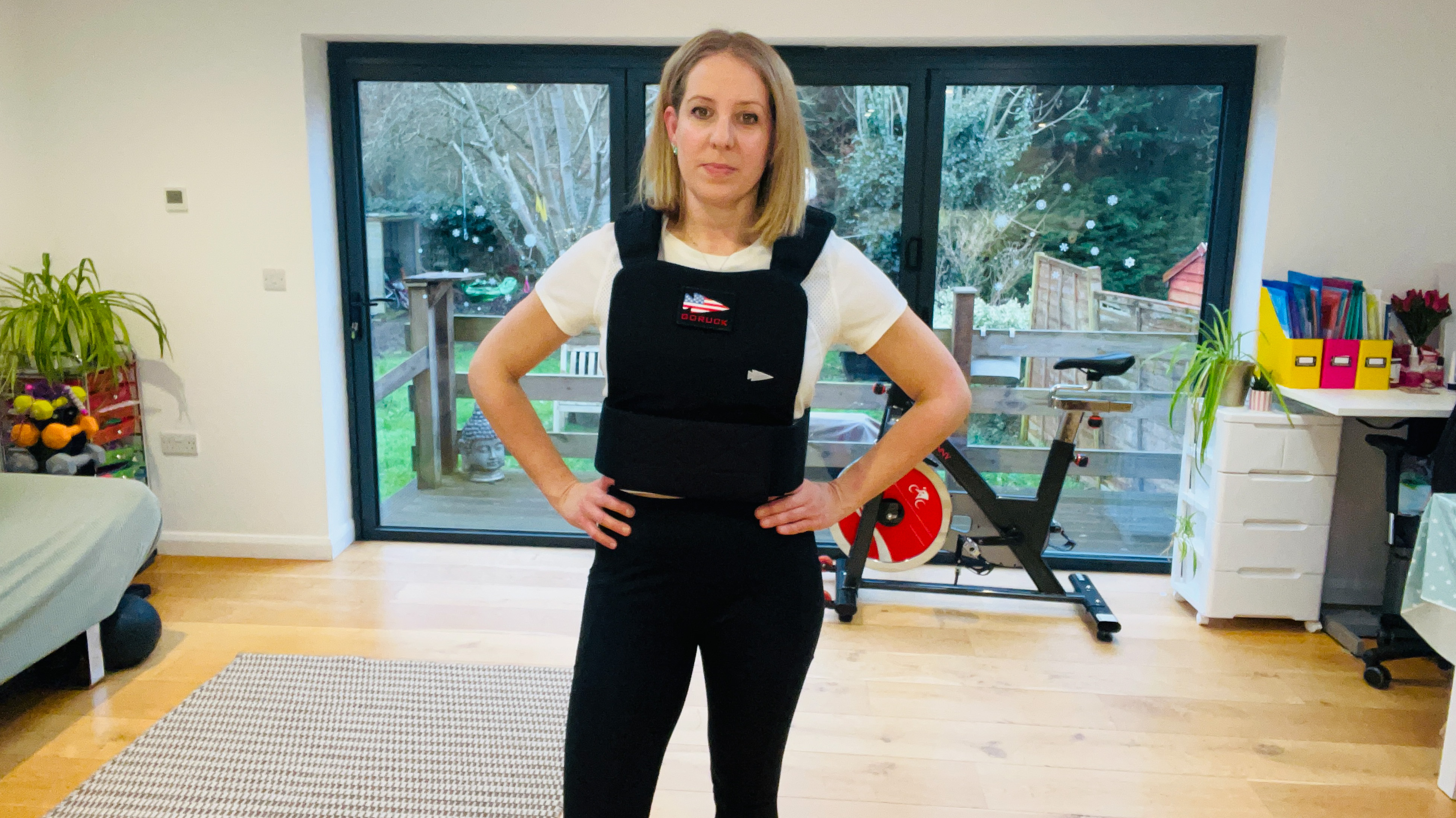Correct sitting posture: reduce back pain and ensure good alignment
The right sitting position can save you hundreds in physiotherapy bills - and dramatically reduce back pain


We've all been guilty of not adopting a correct sitting posture from time to time, whether it's slouching in front of the TV for hours or sitting cross-legged at your workstation.
Whilst they may not impact you in the moment, repeated bad seated positions catch up with your body over time. This can result in back pain, a not-so-attractive hunchback look and frantic Google searches for the best posture correctors - issues that have all been amplified since lockdown.
Good sitting posture is key to a healthy spine and back, so the good news is that with a few simple steps you can reduce pain and ensure good posture.
- 6 posture exercises to help with natural alignment
- Natural back pain remedies: 7 easy ways to overcome pain fast
What is a correct sitting posture?
To ensure a healthy seated position, make sure the following are applied:
- Head up and straight
Your eyes should be level with whatever it is you are focused on, be that a computer screen, the TV or the person across the dinner table.
- Chin tucked-in
If you find yourself straining forward (for example, to read something on-screen), this can put a strain on your neck. Imagine your back is up against a wall, then bring your head back so it is in-line with that imaginary wall.
- Shoulders relaxed and down
At the same time as tucking your chin, also align your shoulders with the imaginary wall. Push your shoulder blades towards one another, which will open up your chest.
Get the Fit&Well Newsletter
Start your week with achievable workout ideas, health tips and wellbeing advice in your inbox.
- Arms and legs in an L-shape
When working at a desk, your arms should be at a 90-100 degree angle, with your elbows close to your sides. The same goes for your legs; ensure that your feet are flat on the floor and use a footrest if they don't reach. Also avoid crossing your legs, as this causes the pelvis to twist which can result in spinal issues.

Why is correct sitting position important?
Jayden Arnold, consultant physiotherapist at boutique studio Ten Health & Fitness, explains why achieving the correct sitting position is so important.
“Correct spinal alignment ensures that the muscles that are having to work are in the most efficient position possible, and that the load of the body is transmitted through the body’s supporting structures, reducing the demand on these muscles as much as possible."
However, he adds that it's important to allow your body to relax when adopting a correct sitting position, saying: "Even if you hold this position perfectly, you will still be left wondering why your neck and shoulders are hurting."
He advises investing in the best office chair you can afford (choose one that is firm, supportive and doesn’t fall back as you put your weight into it), ensuring your forearms are supported by a desk with enough space and at the correct height, and using a foot stool to stop you from sliding forwards.
Correct sitting position should go hand-in-hand with movement
Whilst mastering your seated posture is important, it's equally important not to hold it for too long.
"My biggest sitting tip is to move as frequently as you possibly can," says Jay. "When we think about why muscles are getting sore, it is because they are having to work too hard holding onto your body in that one position.”
Be sure to take regular breaks from sitting, whether by moving around (go fetch a drink or walk around your house) or alternating your regular desk with a standing desk. Set hourly reminders on your phone, or use a fitness watch that tells you to move, such as the Apple Watch Series 5.
Jay says: “The body is designed for motion not inaction, and our muscles and spines absolutely love stretching and contracting, so by giving your back small doses of these movements throughout the day can make a big difference in our symptoms."
You could also try seated exercises. "For necks and shoulders, I’d highly recommend doing some neck rotations," Jay advises. "For lower backs, doing a simple sitting piriformis stretch or doing 10 squats onto your office chair every couple of hours can be really helpful.”
Which sitting positions should we avoid?
“You shouldn’t fear any sitting position, as long as they’re not held for too long," says Jay.
"Sometimes curling up into a ball in your chair can feel great for a little bit of time. What we know is that certain supported positions make the muscles work less - meaning you can stay in that position for longer without causing an issue. Just try to be aware and stick to the principle of regular movement and changes in position.”
Kirsty is an accomplished journalist specialising in the wellness industry. She has previously written for titles including Grazia, Popsugar, Metro.co.uk, Elle UK and the Sunday Telegraph. You’ll find her running around Windsor Great Park at 6am most mornings (before her toddler, Clementine Lilac, wakes up), followed by a virtual barre class with the team at Psycle London – where that barre burn is just so addictive. Kirsty loves to stock up on new activewear; because, let’s face it, you can never have too many pairs of sculpting leggings. She's always keen to try/endure the latest workouts to come to London. Kirsty also enjoys rustling up nutritious family meals and indulging in her newfound hobby: flower pressing.
-
 I’m a personal trainer and I tell all my clients to do this weighted workout to build muscle and bone health
I’m a personal trainer and I tell all my clients to do this weighted workout to build muscle and bone healthMake home training even more effective
By Maddy Biddulph Published
-
 I'm always stiff from sitting, so I tested out a 12-minute morning mobility routine to see if it could help
I'm always stiff from sitting, so I tested out a 12-minute morning mobility routine to see if it could helpThe short routine taught me a lot about my body
By Becks Shepherd Published